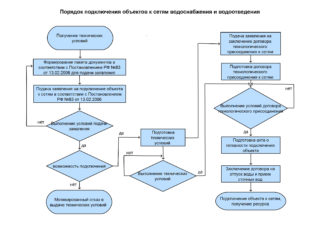When a private house is located far from the benefits of civilization, water supply is possible from its own well or well. In the case when the cottage is located within the city, or there is a centralized water supply in the village, it is advisable to connect to the main networks. It is forbidden to crash into the water pipe under pressure with your own hands. The work must be carried out by specialists from a licensed organization. It is possible to reduce the price of a tie-in into a plastic or metal water supply pipe by independently completing the preparatory earthwork, but only a qualified plumber can make the input to the pressure line itself.
Connection documentation
- the exact place of the future tie-in;
- diameter of the main pipe.
Depending on the specific situation, the technical documentation must contain other data necessary for the production of work.
After receiving the project documentation, the site owner must apply to the territorial department of the SES, justifying the need to connect to centralized water supply networks.
Unauthorized connection to the central water supply is an illegal act for which administrative responsibility is provided.
If an unauthorized tie-in is found, the offender will be obliged to pay a fine, pay the cost of illegally consumed water and pay for the issuance of technical specifications and permission for the further operation of the highway.
Connection refused
The applicant will be refused approval of documents if there is at least one circumstance:
- the need to connect to a large pipeline;
- lack of centralized sewerage;
- the end user does not have water meters.
If you do not need to connect to the mains, the installation of internal water supply networks of the site does not require a permit. Installation of additional plumbing equipment in the apartment also does not require approval from the above organizations.
Connection methods
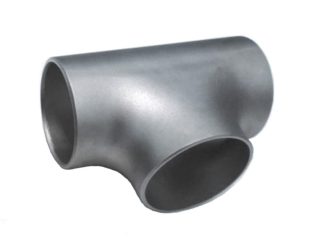
By making a tie-in into the riser of an apartment or private house, you can turn off the water supply and carry out work in a dry system. Disconnecting the high-pressure main water supply system is economically impractical, since a number of activities need to be carried out:
- Reduce system pressure.
- Drain the water.
- Make a hole in the pipe.
- Fix the branch by mounting a ball valve or valve on it.
- Connect the connected pipe section to the internal water supply system.
- Check the tightness of all components.
- Pump water into the main.
- Remove air from the system.
- Go to the design pressure of the pipeline.
This technique is used to weld a tee to an external steel network. With the help of an autogen, a hole is cut out, a branch pipe is welded and the valve is installed.By closing the valve, you can restore the water supply along the main line, and continue further work on connecting the outlet to the internal network. At the end of the work, as far as possible, it is necessary to restore the corrosion protection of the pipes.
A pressure tapping technique has been developed and is being successfully used. Utility water supply networks are equipped with steel, cast iron or polyethylene pipes, you can enter it for any of the listed materials.
The first stage is earthworks. In the place of a potential tie-in, soil is removed using an excavator. To exclude damage to the pipe, the last half meter of the earth is removed manually. For the convenience of work, it is necessary to dig a hole with dimensions of at least 1.5x1.5 meters, so that it is convenient to stand and place the tool. Before preparing the assembly well, it is necessary to dig a trench from the place of the tie-in to the house in order to draw the water supply route.
Insertion technique
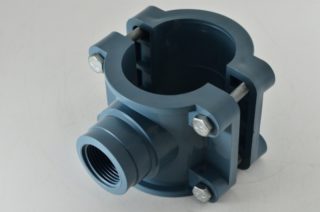
A branch for HDPE, PVC and metal pipes can be made using a device called a saddle. This is a specially designed two-piece clamp. The sleeve connection must match the outside diameter of the pipe. The lower part, or saddle, fits snugly around the pipe. The upper part has a flange or branch pipe for drilling the pipe and connecting the branch. Three-piece saddles are available for large diameter systems. There are no drawbacks to this type of compression fittings, and the list of advantages is quite large:
- low cost;
- reliability;
- quick installation;
- versatility.
The gasket is responsible for the tightness of the product. Tightening is done by gradually and evenly tightening the bolts. This method eliminates the use of welding.
Before applying the clamp, it is necessary to remove the insulation and clean the section of the water supply from dirt and remove the rust for a snug fit of the lining.
Types of fittings
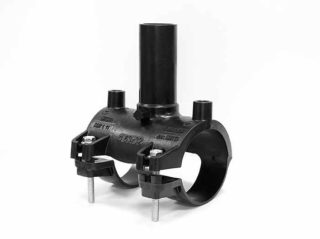
There are several types of saddles, differing in design and method of attachment to the pipe:
- Crimp or compression. It looks like a regular clamp, the upper part of which is equipped with a threaded outlet. They are used for water supply or connection of irrigation systems complete with ball valves and compression fittings.
- Flanged. Installed without welding. It is used for all types of metal pipelines, it does not differ from the crimp models, with the exception of the flange hole. The main application is in the industrial field.
- Electrowelded is used for tapping into polyethylene pipes. The part contains a built-in spiral that melts the pipe and fitting, forming a reliable connection. The cost of this product starts from a thousand rubles.
- Branch pipe cover. Fastened by electro-diffusion welding on a drained water supply system.
- The tapping valve is suitable for pressure service. The fitting is able to control the flow of water in a secondary system using a telescopic extension.
Saddles are made of materials compatible with the material of the main water supply system:
- HDPE or low pressure polyethylene;
- steel;
- cast iron;
- brass.
Having selected a suitable saddle, before starting the installation, check the completeness of the product and the length of the fasteners.
Work order
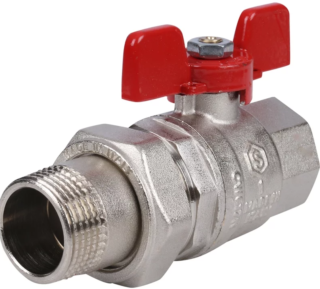
One of the most convenient methods involves installing a locking adapter before drilling. The ball valve in the open position allows the drill to pass through. You can protect yourself from the release of water by trimming a plastic bottle.
- prepare an electric drill;
- fix a drill of a suitable diameter;
- install the upper cut of the plastic bottle on the flange;
- insert a drill into the hole;
- hold the drill with your right hand;
- put your left hand on the tap valve;
- carefully drill the hole;
- after the appearance of water, close the tap;
- remove the drill.
Screw on the branch with the threaded connection, and continue with the installation of the internal network. At the end of the work, check the tightness of the connections. A metal crown can be used instead of a drill to drill a large diameter pipe.
An insert into a cast-iron water supply pipe requires special care, because cast iron is fragile: excessive pressure on the drill or overheating of the pipe can lead to a violation of the integrity of the system.
Saddles withstand short-term pressure up to 16 atmospheres and have proven themselves well at an operating pressure of 10 atmospheres. The strength of the clamp connection is evidenced by the fact that it does not require the mandatory installation of an inspection well. If possible, a caisson can be arranged at the tie-in point, which will allow an inspection of the pipeline at any time.
Manhole device
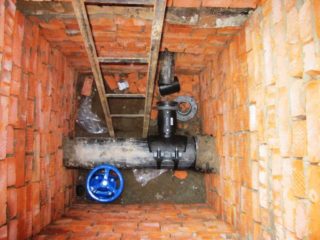
If the water supply is taken to the balance by Vodokanal, the organization is responsible for the integrity and operability of the system. If the asset holder is a private person, for example, the owner of suburban real estate, it is necessary to ensure the ability to control the place of the tie-in:
- deepen the pit by 0.5-0.7 meters;
- cover the bottom with a layer of gravel 20-30 cm;
- cover the bulk material with a waterproofing coating;
- lay the reinforcement grid or tie the reinforcement yourself;
- make a concrete screed 10 cm high.
After the concrete has set, it is necessary to equip the shaft, cover it with a slab, providing a hole for the inspection hatch in it. The inside of the caisson must be treated with waterproofing mastic.
Knowing the principles of tapping into the main water supply, you can independently mount the network on the territory of your own site. Outlets from a centralized supply pipe can be made in such a way that the meter takes into account all the water consumed.

